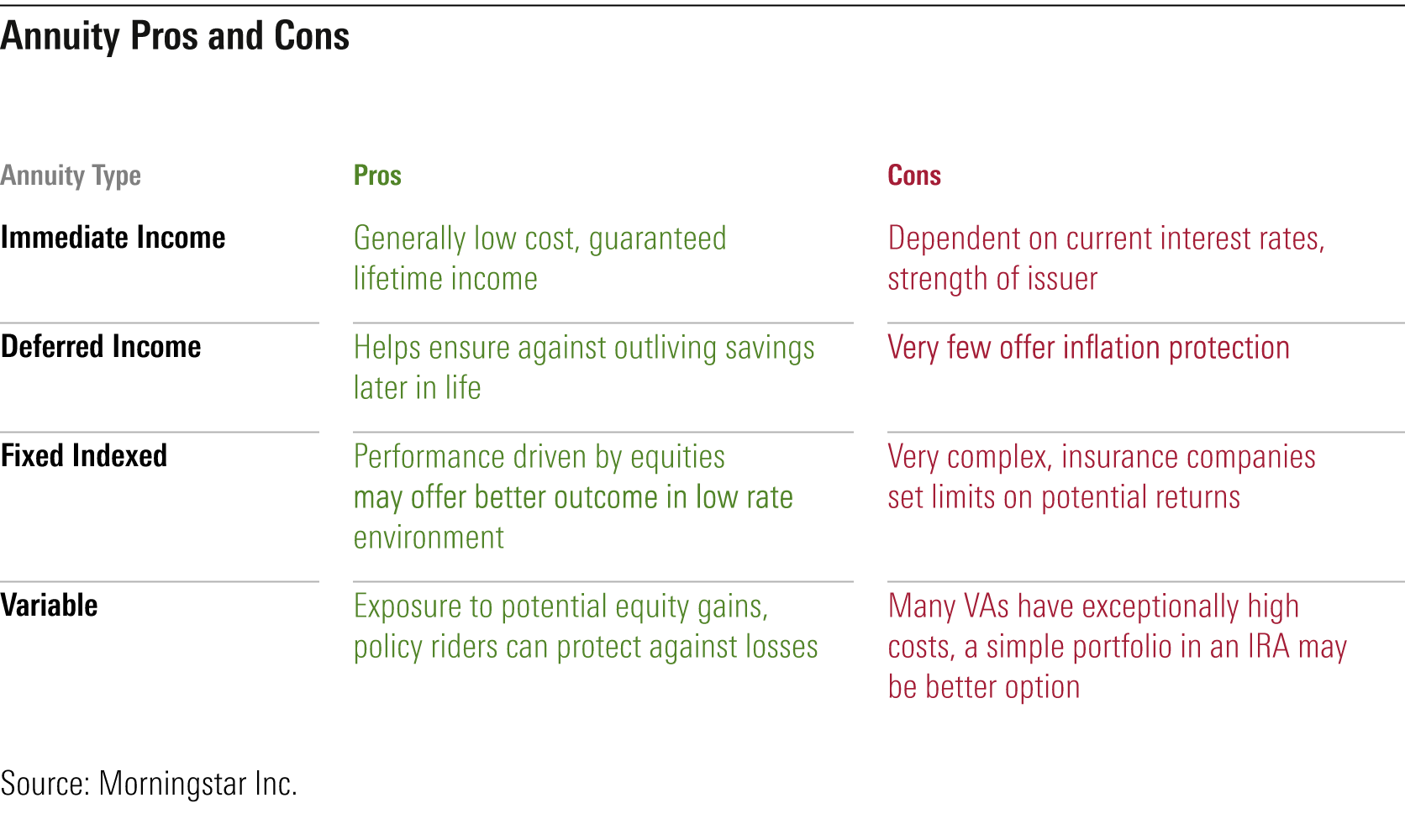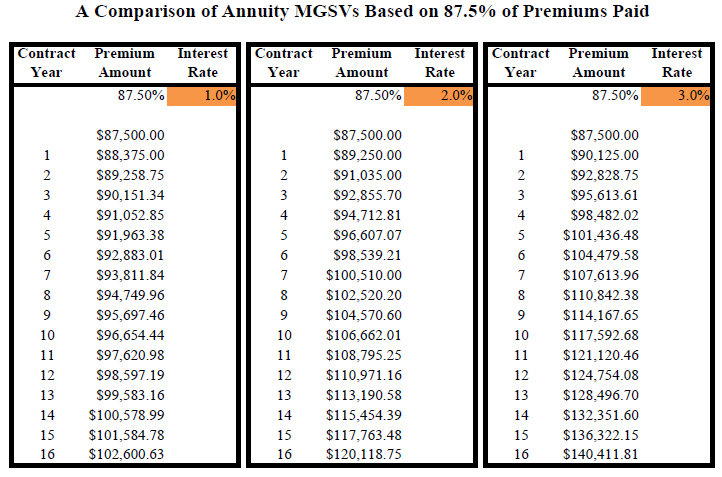Featured
Table of Contents
Equally as with a taken care of annuity, the proprietor of a variable annuity pays an insurer a round figure or series of repayments for the guarantee of a collection of future settlements in return. As stated over, while a dealt with annuity grows at an assured, consistent rate, a variable annuity expands at a variable price that depends upon the performance of the underlying financial investments, called sub-accounts.

Throughout the buildup phase, possessions bought variable annuity sub-accounts grow on a tax-deferred basis and are tired only when the contract proprietor takes out those incomes from the account. After the accumulation stage comes the earnings stage. Over time, variable annuity properties must in theory raise in worth until the agreement proprietor decides he or she want to start withdrawing cash from the account.
The most considerable issue that variable annuities generally present is high expense. Variable annuities have a number of layers of fees and expenses that can, in accumulation, develop a drag of up to 3-4% of the contract's worth every year. Below are one of the most usual costs associated with variable annuities. This expense makes up the insurance provider for the threat that it presumes under the terms of the agreement.
Highlighting the Key Features of Long-Term Investments A Closer Look at Fixed Annuity Vs Variable Annuity Defining Variable Vs Fixed Annuities Features of Smart Investment Choices Why Choosing the Right Financial Strategy Can Impact Your Future Variable Annuity Vs Fixed Annuity: Simplified Key Differences Between Different Financial Strategies Understanding the Key Features of Long-Term Investments Who Should Consider Annuities Fixed Vs Variable? Tips for Choosing Variable Annuity Vs Fixed Annuity FAQs About Fixed Annuity Vs Equity-linked Variable Annuity Common Mistakes to Avoid When Planning Your Retirement Financial Planning Simplified: Understanding Retirement Income Fixed Vs Variable Annuity A Beginner’s Guide to Smart Investment Decisions A Closer Look at Annuities Fixed Vs Variable
M&E expense charges are computed as a percent of the agreement worth Annuity companies hand down recordkeeping and other management costs to the agreement proprietor. This can be in the type of a level annual fee or a percent of the contract worth. Management costs may be included as part of the M&E threat fee or might be analyzed independently.
These fees can vary from 0.1% for passive funds to 1.5% or even more for proactively handled funds. Annuity agreements can be personalized in a variety of ways to offer the particular needs of the agreement owner. Some common variable annuity bikers include guaranteed minimal accumulation advantage (GMAB), assured minimum withdrawal advantage (GMWB), and guaranteed minimum revenue advantage (GMIB).

Variable annuity payments offer no such tax reduction. Variable annuities have a tendency to be highly ineffective automobiles for passing wealth to the future generation because they do not enjoy a cost-basis adjustment when the initial contract owner dies. When the owner of a taxed financial investment account passes away, the cost bases of the financial investments kept in the account are gotten used to mirror the market costs of those financial investments at the time of the owner's death.
Exploring Annuities Fixed Vs Variable Everything You Need to Know About Financial Strategies Breaking Down the Basics of Investment Plans Features of Fixed Vs Variable Annuity Pros And Cons Why Fixed Income Annuity Vs Variable Growth Annuity Matters for Retirement Planning Fixed Annuity Or Variable Annuity: A Complete Overview Key Differences Between Fixed Indexed Annuity Vs Market-variable Annuity Understanding the Risks of What Is A Variable Annuity Vs A Fixed Annuity Who Should Consider What Is A Variable Annuity Vs A Fixed Annuity? Tips for Choosing Fixed Income Annuity Vs Variable Annuity FAQs About Planning Your Financial Future Common Mistakes to Avoid When Choosing Fixed Vs Variable Annuity Pros Cons Financial Planning Simplified: Understanding Indexed Annuity Vs Fixed Annuity A Beginner’s Guide to Fixed Index Annuity Vs Variable Annuity A Closer Look at Annuities Variable Vs Fixed
Such is not the instance with variable annuities. Investments held within a variable annuity do not get a cost-basis adjustment when the initial proprietor of the annuity dies.
One significant issue connected to variable annuities is the capacity for disputes of interest that might feed on the component of annuity salespeople. Unlike a monetary consultant, who has a fiduciary obligation to make investment decisions that profit the client, an insurance broker has no such fiduciary obligation. Annuity sales are highly rewarding for the insurance coverage specialists who sell them as a result of high ahead of time sales payments.

Numerous variable annuity contracts contain language which positions a cap on the percentage of gain that can be experienced by particular sub-accounts. These caps prevent the annuity proprietor from totally taking part in a part of gains that could otherwise be enjoyed in years in which markets create significant returns. From an outsider's viewpoint, presumably that capitalists are trading a cap on financial investment returns for the aforementioned ensured flooring on investment returns.
As noted above, give up fees can severely restrict an annuity proprietor's ability to relocate possessions out of an annuity in the very early years of the contract. Additionally, while the majority of variable annuities allow agreement owners to withdraw a defined amount during the build-up phase, withdrawals yet quantity normally lead to a company-imposed cost.
Withdrawals made from a set rate of interest financial investment alternative might additionally experience a "market value adjustment" or MVA. An MVA changes the worth of the withdrawal to show any type of changes in rate of interest from the moment that the cash was invested in the fixed-rate option to the time that it was taken out.

Quite commonly, even the salespeople that market them do not fully recognize exactly how they function, and so salesmen occasionally exploit a buyer's feelings to sell variable annuities rather than the qualities and suitability of the items themselves. We believe that investors ought to completely recognize what they possess and how much they are paying to possess it.
Analyzing Strategic Retirement Planning Everything You Need to Know About Financial Strategies Breaking Down the Basics of Fixed Annuity Or Variable Annuity Pros and Cons of Choosing Between Fixed Annuity And Variable Annuity Why Choosing the Right Financial Strategy Matters for Retirement Planning How to Compare Different Investment Plans: Explained in Detail Key Differences Between Different Financial Strategies Understanding the Risks of Long-Term Investments Who Should Consider Retirement Income Fixed Vs Variable Annuity? Tips for Choosing Variable Vs Fixed Annuity FAQs About Tax Benefits Of Fixed Vs Variable Annuities Common Mistakes to Avoid When Planning Your Retirement Financial Planning Simplified: Understanding Your Options A Beginner’s Guide to Smart Investment Decisions A Closer Look at How to Build a Retirement Plan
The very same can not be claimed for variable annuity properties held in fixed-rate financial investments. These possessions legally come from the insurance business and would as a result go to threat if the business were to stop working. In a similar way, any assurances that the insurance policy business has consented to provide, such as an ensured minimum earnings benefit, would certainly remain in question in case of a company failing.
Consequently, prospective buyers of variable annuities should understand and take into consideration the financial problem of the providing insurance coverage company before becoming part of an annuity agreement. While the benefits and drawbacks of different kinds of annuities can be discussed, the actual concern surrounding annuities is that of suitability. In other words, the inquiry is: that should own a variable annuity? This concern can be tough to respond to, offered the myriad variants readily available in the variable annuity cosmos, yet there are some basic standards that can assist financiers determine whether or not annuities should play a duty in their financial strategies.
Besides, as the saying goes: "Caveat emptor!" This post is prepared by Pekin Hardy Strauss, Inc. Low-risk fixed annuities. ("Pekin Hardy," dba Pekin Hardy Strauss Riches Management) for educational purposes just and is not planned as an offer or solicitation for service. The details and information in this article does not comprise legal, tax, bookkeeping, financial investment, or other specialist advice
Table of Contents
Latest Posts
Analyzing Strategic Retirement Planning A Comprehensive Guide to Investment Choices Defining Choosing Between Fixed Annuity And Variable Annuity Benefits of Choosing the Right Financial Plan Why Fixed
Highlighting the Key Features of Long-Term Investments A Closer Look at How Retirement Planning Works Breaking Down the Basics of Investment Plans Pros and Cons of Fixed Annuity Or Variable Annuity Wh
Exploring Variable Annuity Vs Fixed Indexed Annuity A Comprehensive Guide to Fixed Annuity Or Variable Annuity What Is the Best Retirement Option? Features of Smart Investment Choices Why Fixed Index
More
Latest Posts